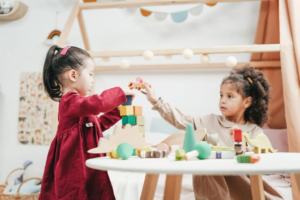
SSUCv3H4sIAAAAAAAEAH1Sy27DIBC8V+o/RJxjCYzj2r23596rHgjgBAV7LcBpq8j/XvAj2VRVb7sz6/HOsJfHh82G7IU3kjxvLqmLvbF28MGJYKCLMN0uuFYmgDPCJjBh48QQH0QYvPZIguXcNbHn67fCivYbA1J0PoA89UcIcEeAhcHt4QuDSvfgTZiG/R3htGh9MK3GaBPHrBEY6qFTOwz44xCCdtMSCUeGpAj6EJ3eWVpTep/7zUosbkKkyJuG3mqyRYwf9ol5Fa2xSXClxu0/Oi9qkHP8f0jdJObi45rxQXcyhXwZkRmnrRbz6yyrk5xWqzDJGUd1jmqG6uJW0xLhSIfWCL/VjNNp4XlLcvqMmbdTrst+Z6M0oF4MygDK/QxSWP/rhXpnpOkOaGx932ua00y6iqKYIRwKhKN26KcyHjy0COggTJGR2QhR8SRSyzjjdVmy6qmi7KmmbEmDTHdkFHZmVPqCl7QoSlZnrBF1VtBql9VVXWZV04hc84aqoowJjT862kAqjAMAAA==
With the ever-increasing infiltration of technology into classrooms in today’s society, many teachers are struggling to come up with ways to keep their students more involved in their learning experience. We learn best when we aren’t distracted and have a more hands-on learning experience. But how can we make classrooms more hands-on? These are some of the best ways that teachers all around the world can help to keep their students more involved and learning the best that they can. Most of them can be incorporated into any classroom of any subject, so you may want to consider infiltrating multiple of these activities into your learning curriculum.
Assign a Creative Space
One of the best ways to help your students have a more hands-on learning experience is to dedicate a certain part of the classroom for tools and materials that students can use to create and make their own projects. You can best do this by keeping a certain part of the classroom fully stocked with materials and tools that students can easily access to make their own inventions. You can either use a corner of the classroom, a certain empty desk off to the side or you can even use a mobile cart. Once you have an area set apart for tools, you’ll want to put a variety of accessories in this area because versatile tools can help to best spark students’ imaginations, making them think outside of the box. For instance, you should consider putting various types of glues in this creative space along with cardboard, plenty of markers and drawing utensils and even some pipe cleaners. When children have easy access to tools and materials that they feel free to use, they will be more willing to explore their imagination while in the classroom.
Use Technology to Your Advantage
Although many classrooms are being required to use more technology to better monitor students and give an easier, more convenient access to education, you can still use this technology to your advantage. Students might even find an online tutor to assist them with their lessons after school. There are certain activities and programs on technological devices that can allow students to be more interactive with their learning experience. You can maybe think of group activities that students can do together while using technology to think better while also engaging in a hands-on learning experience. Even though the technology is often seen as a boring or dull way to deliver an educational experience, there are many different ways that you can use it to your advantage.
Use Stream Tables
Especially for science or math classrooms, stream tables are a great way for students to learn about the world around them in a fun manner. A stream table is a table specifically designed to reenact the motion of streams and water systems in the natural world. They can be created with a variety of different materials, so students have the ability to use their creative imagination. Whether they’re trying to reenact a larger stream with lots of water or a rocky stream with sand and stones, a stream table gives students the leniency they need to create what they please. They specifically offer a hands-on learning experience because they help children to better understand how the landscapes in the natural world around them are affected by water, its movement and its systems.
Invoke Visuals
It’s been proven that incorporating multi-sensory learning options in the classroom can not only help students to learn better and retain the information for a longer amount of time, but it can also keep students more interested in what they’re learning about. You can incorporate multi-sensory learning options in practically any learning subject, so any teacher can utilize this method. For instance, math teachers can incorporate counting blocks or charts for visual representations of numbers and their interactions with each other. Language arts and English teachers can utilize plastic Easter eggs or other types of blocks to help students better learn opposites or how sentences are structured. Science teachers can use magnifying glasses or rocks and twigs to help children visualize the physical world hands-on. And teachers in Social Studies can infiltrate plays and props to help kids better understand historical interactions while having fun with each other.
Overall, offering kids a hands-on learning experience can help them to learn better, more effectively and have fun while doing so. Teachers that have incorporated hands-on learning options in their classrooms are able to allow the students to lead in their own education with easier access to materials. Whether you’re teaching math, science, language arts or some other school subject, these hands-on learning methods can benefit your classroom environment physically and mentally.


